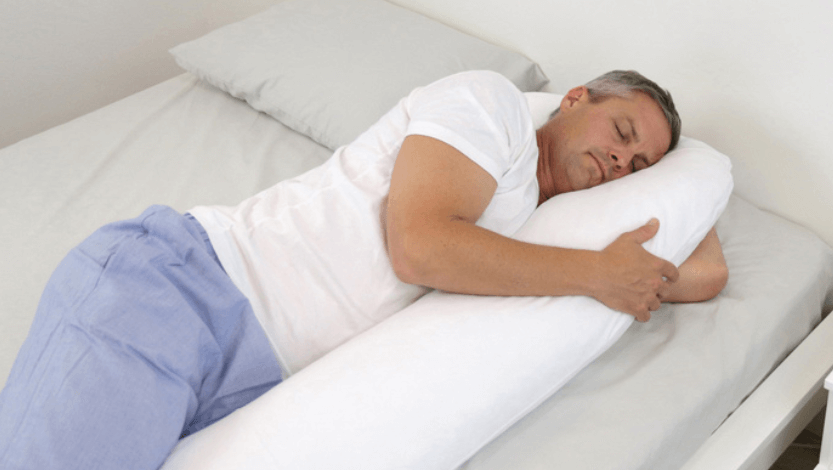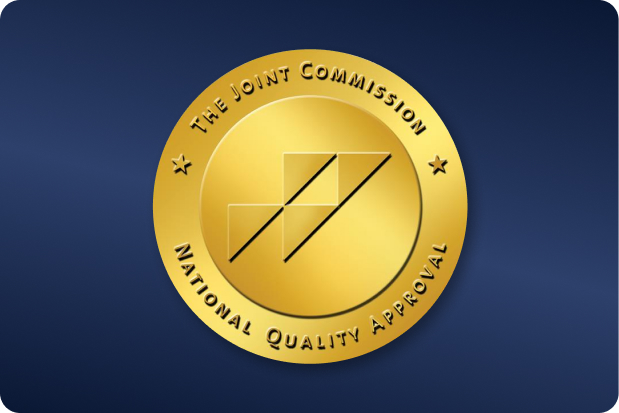 OUR LOCATIONS
Call to book 201.523.9590
OUR LOCATIONS
Call to book 201.523.9590
 OUR LOCATIONS
Call to book 201.523.9590
OUR LOCATIONS
Call to book 201.523.9590

Kyphosis is a condition where your upper back is more curved than normal. It’s a fairly common condition that affects adolescents and adults, though there are some cases where it’s been observed in very young children. This abnormal spinal curvature can cause a variety of problems, the most prevalent one being a change in sleep quality.
So how do you sleep with kyphosis? One of the best solutions is to adjust your sleeping position. Your doctor may recommend other solutions, but the first course of action would be to address your sleep habits.
Kyphosis isn’t a singular condition. Distinct types of kyphosis differ in their severity and how they affect a patient’s quality of life. The lack of proper sleep is one of the common complaints reported by kyphosis patients, either because of the discomfort caused by their spine or active pain caused by lying down.
Having any condition that makes sleeping difficult can severely affect someone’s life. The good news is that sleeping difficulties due to kyphosis can be addressed successfully. The best ways to improve sleep quality for kyphosis patients include changing their sleep posture, adjusting their sleeping conditions, or undergoing exercises to address the kyphosis itself.
Regardless of the type of kyphosis, the changes that occur with your spinal column will have a significant effect on how you sleep. Aside from a few adjustments during sleep, your body maintains a fixed position when you rest. So if any muscles, tendons, or bones are contorted, they’ll stay that way long after you wake up.
While most people experience this with mild symptoms that resolve themselves quickly after a day’s rest, it can be significantly more painful for people with kyphosis. Because their thoracic region is experiencing significant stress, improper sleeping positions can worsen that effect. However, that also means that proper posture during sleep can also alleviate kyphosis symptoms.
The National Sleep Foundation has ranked sleep positions based on how neutral your spine remains when lying down. Sleeping positions that put less weight on your spine while keeping its natural curvature are ideal since this prevents muscle soreness and pinched nerves.
Lying on your back is considered the best sleeping position because it disperses the full weight of your body. This minimizes the number of pressure points on your back and fully supports the natural curvature of your spine. It also helps align your neck with the rest of your head, which prevents any nerves at the base of your head from being damaged.
While plenty of people prefer sleeping on their side, this position pulls the lower legs to one side, which can end up pulling your spine out of position. This also encourages slouching, which can mis-align the spine even further.
If this is your default sleeping position, put a pillow between your knees so it perfectly aligns with the rest of your spine. You can also try hugging a firm pillow against your front to prevent you from slouching while you’re asleep.
As many people’s first sleeping position, the fetal position makes you curl inwards with bent legs. This shares a lot of the same issues with sleeping on your side, but with the added complication of putting extra stress on your joints. While its negative effects don’t really matter to younger people, older individuals who sleep in this position can suffer from moderate and frequent joint pain.
The best way to compensate for this is to loosen your body, uncurl your wrists, and avoid tucking in your chin. You should also curl up with a pillow between your hips to align your legs with the rest of your spine.
Lying down on your stomach is considered the worst sleeping position because it forces you to twist your neck to one side for breathing. It’s also a position that puts a lot of pressure on your knees, abdomen, and upper back, which can quickly lead to prolonged and painful muscle soreness and stiffness.
To address these shortcomings, sleep with a pillow underneath your abdomen and slightly above your forehead. The crucial thing to remember is here is to keep your spine relatively straight and pressure-free.
If you’re suffering from kyphosis, ask your doctor about the best kind of sleeping position for you based on your regular sleeping habits. Picking the right position can help ease the pain and give you a more peaceful night’s sleep.
If you’re having trouble sleeping, your doctor may give you the Pittsburgh Sleep Quality Index (PSQI), a questionnaire that looks at your sleep quality over a 1-month interval. This helps them get a better idea about your sleep habits so they can give you more reliable advice on how to improve your sleep experience, especially if you have kyphosis.
Here’s a brief table summarizing the important parts of the index:
| Component | Definition | Relation To Kyphosis |
| Subjective Sleep Quality | How well the person’s sleep went | Severity of kyphosis-related pain or discomfort |
| Sleep Latency | How long it takes a person to fall asleep | Adjustments required to compensate for kyphosis symptoms |
| Sleep Duration | How long a person’s sleep lasts | Any disturbance in sleep from sudden pain or discomfort due to kyphosis |
| Habitual Sleep Efficiency | How much time is spent just laying down vs. actually sleeping | Complications like back pain, stress, or trying to find the best sleep position |
| Sleep Disturbances | How often the person experience interrupted sleeping | Again related to kyphosis-induced pain or discomfort |
| Use Of Sleeping Medication | How often the person uses medication/other aids to help them sleep | Counterbalanced against the effects of any medication taken because of kyphosis (such as painkillers) |
| Daytime Dysfunction | How well the person goes about their daily routines after waking up | Sluggishness, grogginess, tenderness, and other aggravated symptoms of kyphosis |
If you’re suffering from kyphosis, your doctor may refer to this index to get a better perspective on how to improve your sleep quality. These seven components are crucial in identifying what specific parts of sleep you’re having trouble with because of your condition. Once your doctor has a clear idea of your sleep quality, they can recommend more personalized solutions to improve your sleep.
There are two goals to getting better sleep with kyphosis: comfort and posture. A patient should aim to get in the best possible sleeping position with their type of kyphosis, without aggravating the symptoms even further.
Here are some things you can do to make your sleep go a little easier:
Because kyphosis pushes your spine out of alignment, you’ll need to brace the other parts of your body like your knees, lower back, and neck to compensate for the bent. The aim of using a pillow is to alleviate pressure on your spinal nerves, which is the main source of acute pain.
On that same note, the mattress shouldn’t be too firm as to press down on your back when you sleep. Most doctors would recommend either memory foam or lumbar support mattresses, since they can yield to weight while still remaining relatively firm to support your natural sleep position.
Water beds can be a tricky case, since they can help ease or worsen the symptoms of kyphosis. We suggest trying out a water bed for a week maximum and evaluate your sleep quality after. If you find your sleep more comfortable, then it can be safe to keep using it.
Back braces and posture braces can help keep your spine aligned when you sleep, but they’re also an excellent way to condition it while you’re awake. If you tend to toss and turn about during sleep, wearing a posture brace can help mitigate the amount of pain you experience.
However, patients should never wear a posture brace without medical advice. Only doctors can recommend the best brace for you to use. Using a brace without medical advice can be extremely dangerous since it can worsen your condition.
If you don’t have a comfortable environment when you sleep, you run the risk of ruining your sleep quality. Sleep quality is extremely important for kyphosis patients since moving around in their sleep can aggravate their symptoms.
Temperature is one significant cause of discomfort: too hot, and you tend to lie on your side instead of your back. On the other hand, cold temperatures can affect your bones and joints. Experiment with what’s comfortable, and your sleep should improve.
Sleeping with kyphosis requires consistent self-monitoring, but it should be easy to start a regular and comfortable sleep habit once you’ve established what setup works for you.
Aside from severe cases, kyphosis is not a debilitating health issue. Most kyphosis patients experience mild symptoms and only require routine checkups to address their conditions.
The most prominent symptom of kyphosis is slouching or having a visible hump on your upper back. You may also experience pain and discomfort when stretching. Rounded shoulders are not always a sign of kyphosis but consistent slouching can increase the chances of developing it. Other kyphosis symptoms also include:
If you’re experiencing back pain of any kind, it’s best to consult your doctor to check if it’s kyphosis.
Kyphosis has many causes. While one of the primary reasons people develop kyphosis is poor posture, this only applies to certain types of kyphosis. Other causes of kyphosis include:
Kyphosis may also be caused by other underlying illnesses or health conditions. Every case of kyphosis is different, but getting better sleep is a good way to manage the case in general.
Before going to the doctor to see if you have kyphosis or not, there are some questions that you should prepare for.
Treatment of kyphosis will depend on what type of kyphosis you may have, but it will include:
Most cases of kyphosis are mild and can be treated via physical therapy. Surgery is only considered for extreme cases and can be followed up with intensive physical therapy or custom-fit orthotics.
Sleeping with kyphosis is all about developing better posture. Patients need to work closely with doctors to identify the key areas where they have difficulty sleeping for the best solutions. The best way to prevent kyphosis is to make sure your spine is aligned and practice proper posture when sitting or lying down.
If you’re experiencing any back pain, it may be an underlying sign of a more serious condition. The best way of preventing any serious spinal issues is early detection and intervention. The Spine And Rehab Group has years of experience in diagnosing and treating different back pain and addressing their root causes before they escalate. Visit any of our New York clinics today, or schedule an appointment via our contact lines.
Read more: Which Is Worse, Back Strain Or Sprain?



